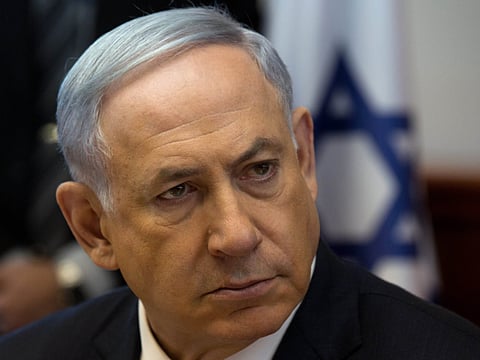Why not tell the other side of the story
Palestinians have many supporters in the US, but they are not being mobilised for their cause

The other side of the coin in the relations between the West, primarily the US, and the Middle East — especially Israel — is frustrating and disappointing, if not damaging. Despite the recent “war of words” that took place between the vociferous Israeli Prime Minister Benjamin Netanyahu and US President Barack Obama, the relationship is now mending. To cite but one appeasing gesture, US Vice-President Joe Biden promised last week the delivery next year of top-flight fighter jets, Lockheed Martin’s new F-35s, making Israel the only country in the region to have the new stealth warplanes.
Biden announced his gesture before a primarily Jewish audience at an Israeli Independence Day celebration in Washington, hosted by Israeli Ambassador Ron Dermer — a Netanyahu confidante who has been blamed by Obama’s aides for orchestrating the prime minister’s recent Congressional address.
The low-key American gesture was immediately followed by a loud call from Iranian Foreign Minister Mohammad Javad Zarif for Israel to give up its nuclear weapons. He was speaking at the United Nations before the 120-nation Non-Aligned Movement (Nam) conference aimed at advancing prospects for a nuclear-free world, particularly in the Middle East.
This response matches others made by the Palestinian National Authority (PNA) in the past few months, mainly to compel Israel to negotiate a peace settlement following its 51-day war in the Gaza Strip last year, which resulted in the deaths of more than 2,200 Palestinians, including about 500 children. The severely-damaged region remains besieged and no sign has emerged of rebuilding the area where 1.7 million refugees live. About 19,000 homes have been destroyed or severely damaged in Gaza and another 134,000 have suffered some damage. Moreover, about 100,000 have been displaced, living in United Nations schools, tents pitched on rubble or rented apartments and storefronts. Donor countries and international organisations have pledged $3.5 billion (Dh12.87 billion) but only $945 million has been received so far — about a quarter of the donations pledged.
The Association of International Development Agencies (Aida) earlier this month urged the international community to adopt a new approach to Gaza, including pressuring Israel to lift its border blockade. Its report, signed by 45 groups, said only open borders and a durable ceasefire can bring economic, social and political stability to Gaza. Otherwise, a return to conflict is inevitable. Coincidentally, the UN released a summary this week of its findings in an official internal inquiry it had been conducting for several months, in which it charged that Israeli military actions had killed 44 Palestinian civilians who had sought refuge in seven UN schools in Gaza. The UN also said that 227 Palestinians were wounded in the schools.
Adding insult to injury, the Israeli government invited tenders last Monday for the construction of 77 homes in colonist neighbourhoods of Israel-occupied East Jerusalem, the capital of the projected Palestinian state, colony watchdog Peace Now said. Israel has so far paid $10 million to the UN for damages to its other sites in Gaza.
The New York Times added that the findings “may serve to buttress the Palestinian [National] Authority’s intention to hold Israel accountable to the International Criminal Court, which it officially joined this year”.
What has been glaringly obvious here is the failure of Arab governments, particularly the PNA, to tell their side of the story to the West, especially the US. On the other hand, Israel has hardly left a stone unturned in reaching out to supporters and contributors — and now particularly to their new-found friend, the Republican Party.
The Palestinians have many supporters and admirers in the US but disappointingly they are not mobilised for their cause. A case in point is the Franciscan Monastery of the Holy Land in America, established in a Washington neighbourhood. Their brochure says that “every day for almost 800 years, Holy Land Franciscans have been caring for the people of the Holy Land and preserving sites located there”. The monastery is home to many replicas of the holy sites, notably the large portrait in the church of the Virgin Mary, which is identified as the “Lady of Palestine”. This portrait still appears in many Palestinian towns and villages.
Interestingly, the BBC Magazine had earlier this month carried a news feature about St George, who was born in Palestine, and who both the British and Palestinians Christians regard as their patron saint. “While the saint’s father is usually traced back to Cappadocia, an area in modern Turkey, it is believed his mother was Palestinian from Lydda,” a still-existing town near occupied Jerusalem.
There are still many other issues that the Arab and Middle East governments could use in highlighting their stance and diminishing the seemingly hallowed image of the Israeli government. If none could establish think-tanks or the likes in the US to explain their side of the story, they could use advertising in local media, as others do, especially Israel and its supporters in the US.
George S. Hishmeh is a Washington-based columnist. He can be contacted at ghishmeh@gulfnews.com
Sign up for the Daily Briefing
Get the latest news and updates straight to your inbox



